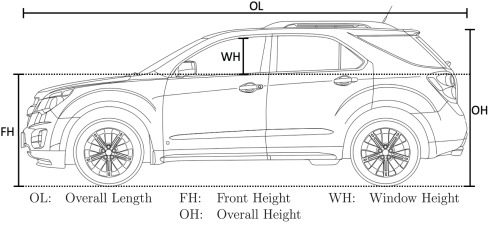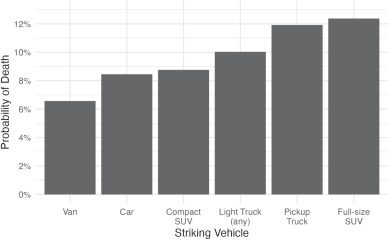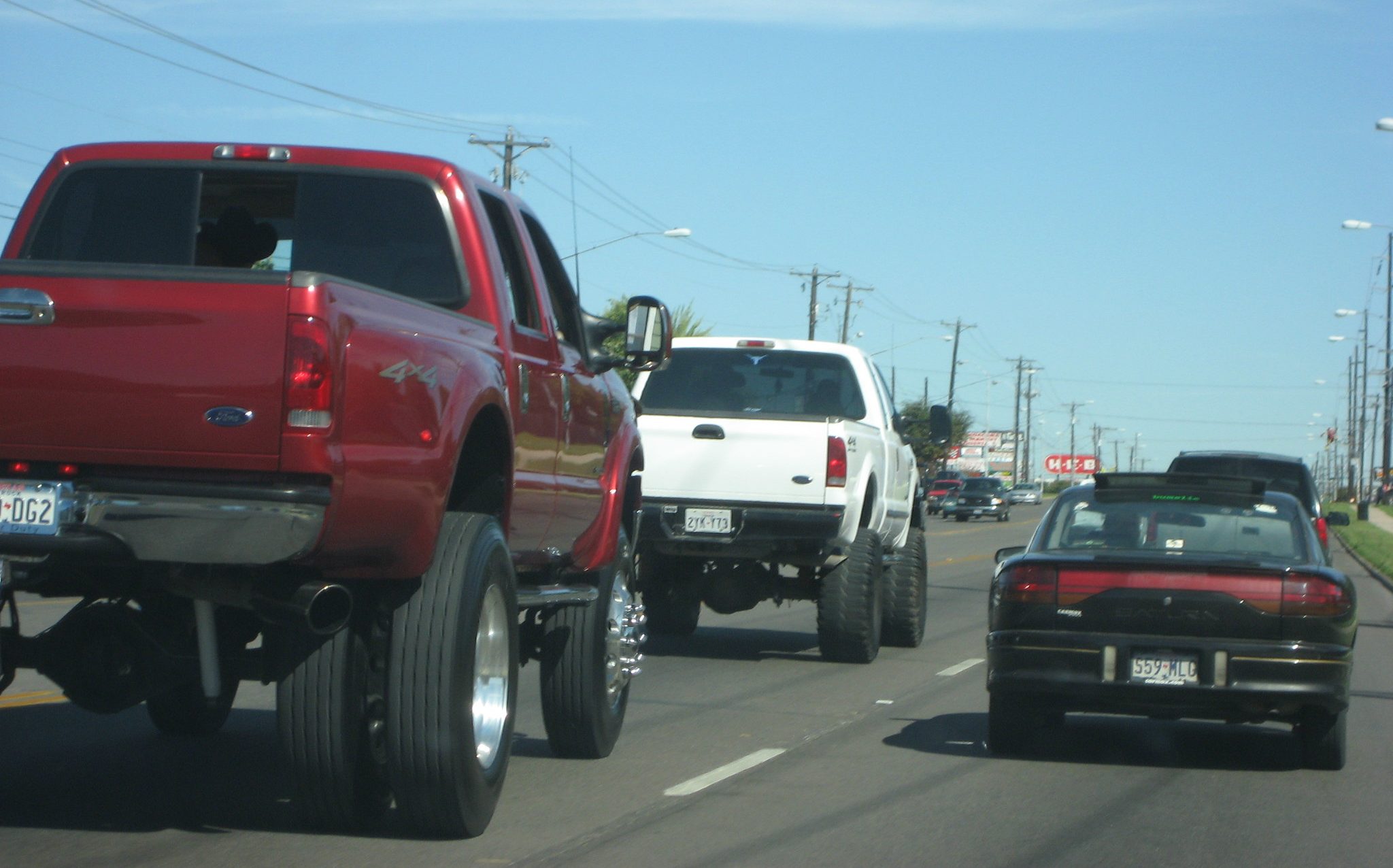America could cut nearly 18 percent of pedestrian deaths a year just by capping the hood height of passenger trucks and SUVs at the level of a modest crossover, a new report finds — but its author says taking even that simple step would be both politically unlikely and insufficient to completely address the crisis.
In what may be the first analysis of its kind, researchers at the University of Hawaii confirmed a long-held suspicion among Vision Zero Advocates that the increasing hood height of the average American vehicle is accelerating the national pedestrian death crisis, which claimed 7,508 lives last year alone.

The analysis — which spanned more than 3,300 real-world crashes and controlled for virtually every conceivable variable besides how tall vehicles were — found that just 10 centimeters (aka 3.9 inches) of additional front-end height in the striking car was associated with a 22-percent increase in fatality risk for the walkers they struck. Pick-up truck drivers who hit a pedestrian during the study period were 63 percent more likely to kill them than the driver of a standard-sized car; a full-sized SUV driver, meanwhile, was nearly twice (99 percent) more likely.
And as SUVs and pick-up sales continue to dominate the U.S. market, those numbers make a compelling case for regulatory reform, argues study author and economics professor Justin Tyndall. If modern cars’ maximum front height was capped at 4.1 feet — roughly the height of the popular compact Honda CR-V — he estimates that 509 lives a year could be saved. Capping hood heights at 3.6 feet would save 1,350.
“Maybe this is not that surprising, but I think the size of the effect was surprising,” Tyndall added. “Ten centimeters isn’t that much of an increase in vehicle height, but it has a large increase in the probability that a pedestrian dies.”

Tyndall's call for action, though, comes with some asterisks.
Even under the most aggressive height restrictions — which Tyndall says are "unlikely to be adopted," considering that drivers tend to buy big cars to keep themselves safe from even bigger cars — it would take roughly a decade to phase a meaningful number of smaller, safer cars into the overall fleet, especially as vehicle prices continue to skyrocket and put new cars of reach for more Americans. And even if we could wave a magic wand and right-size every megacar tomorrow, we'd still need to tackle the many other factors that are driving the death toll up — including ultra-fast roads, which are deadly for pedestrians even when they're struck by the smallest vehicles around.
“We're only explaining a fairly small portion of the recent uptick in [pedestrian deaths] by only thinking about vehicle size," stressed Tyndall. "The more complicated thing is the interaction between all of these dangerous conditions on the roads. If we think of dangerous road design, impaired driving, maybe the increase of distracted driving — the stakes of any of those things goes up when vehicles are larger. These things are all compounding with one another.”
Even if short vehicles aren't a silver bullet, Tyndall's research offers an important glimpse into how much safer our roads could be if we contained the megacar crisis as part of larger reforms — particularly for the most vulnerable pedestrians. His analysis found that full-sized SUVs and pick-ups are particularly deadly for female walkers, who are 70 percent more likely to die than males struck under similar crash conditions — a fact masked by the fact that men are more likely to be involved in high-speed crashes that are deadly regardless of vehicle size.
And needless to say, tall cars are particularly deadly for children under 18, whose probability of death increases 81 percent when cars get just 10 centimeters taller; for seniors, it's 31 percent, and for adults under 65, it's just 21.
If saving all those lives still isn't compelling enough for regulators to take strong action on the car bloat piece of the Vision Zero puzzle, Tyndall hopes that at least they'll consider limiting car height a little. Because even if we can't get Americans out of mega-SUVs entirely, even a slightly less gigantic living-room-on-wheels like the four-foot tall Honda CR-V is still a net win for pedestrian safety.
"That's still a really big car," Tyndall laughed.






